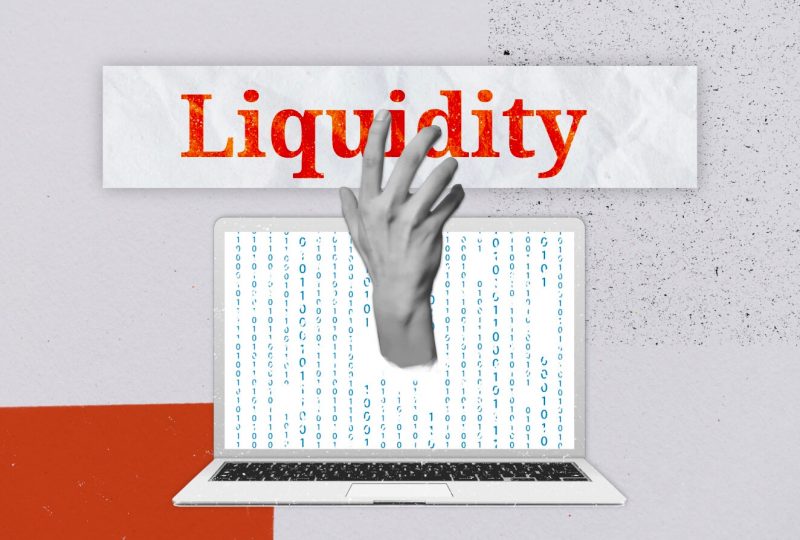This Fed Meeting Is Crucial. Future Rate Hikes Are Just The Start
Jan 25, 2022

Keep an eye on what is said, not what is done at this Wednesday's Federal Open Market Committee meeting. Analysts and market players will do the opposite of famous advice from Richard Nixon's attorney general, John Mitchell, when the Committee may clarify its policy goals but is unlikely to take any quick action.
Indeed, equities and bonds markets have begun 2022, the new year, by adapting to the realities of a less supportive Fed's monetary policy. The yield on the benchmark 10-year Treasury note has risen 34 basis points since the beginning of the year, to 1.836% on Thursday, while the Nasdaq Composite has approached a 10% correction zone from its high in November. According to the CME FedWatch's figures, the federal-funds futures market has completely priced in a first 25-basis-point hike in the Federal Reserve's main policy rate, from the present ground-hugging 0% to 0.25%, at the March FOMC meeting. (One basis point is one hundredth of a percentage point.)
However, rate hikes are unlikely this week, despite a growing agreement (even from President Joe Biden) on the necessity for a less supportive Federal Reserve policy in light of inflation's steep surge. Biden voiced approval for Fed Chair Jerome Powell's aim to "recalibrate" policy at his press conference on Wednesday. "The crucial task of ensuring that the increased prices do not become entrenched falls to the Federal Reserve, which has a twin mandate: full employment and price stability," the president stated.
This is a significant contrast to prior presidents' frequent calls for more money. From Lyndon B. Johnson through Nixon and Donald Trump, presidents have sought to persuade or compel Federal Reserve chiefs to decrease or avoid an increase in interest rates, while George H.W. Bush blamed his election failure on an overly strict Fed. However, the rise in inflation to 7% currently takes the prize of consumer worries, corresponding with a drop in Biden's approval numbers, so his support for a less accommodating Federal Reserve policy looks to be a result of political need.
Inflation fears have grown so strong that some commentators are seeking more quick and forceful actions. This includes suggestions for a 50-basis-point increase in the fed-funds rate, or a total stop in the Federal Reserve's securities buying, instead of the current route of winding down its purchases by March.
But neither is in the spirit of Powell's central bank. "I can't envision another huge swing," says Brean Capital's chief economic adviser, John Ryding. The central bankers stuck to the premise of "transitory" inflation throughout most of the previous year. According to him, a sudden, first 50-basis-point increase would be an acknowledgment of how they underestimated the mounting pricing pressures.
Ryding also does not expect the Federal Reserve to follow in the footsteps of the Bank of Canada, which unexpectedly terminated its asset purchasing in 2021. "What I expect to receive is clarification from the Federal Open Market Committee Session," he said.
One potential surprise would be for the FOMC to expedite the cutting of purchases, ending them by mid-February, a month sooner than presently planned, according to Nomura economists Aichi Amemiya, Robert Dent and Kenn Lee. This would constitute a small decrease of $20 billion in Treasury and $10 billion in agency mortgage-backed securities purchases, but it would convey a message to the markets about the central bank's commitment to the anti-inflationary policy.
They note that a faster end to the Federal Reserve's bond-buying program could assist Powell to dodge tricky questions during his post-meeting press briefing on Wednesday. The Fed keeps purchasing $40 billion in Treasuries and $20 billion in MBS each month, contributing to its near-$9 trillion balance sheet, signaling that it is really easing rather than tightening strategy while citing the necessity to control rising prices.
Nomura analysts believe the Federal Reserve will disclose its intention to normalize its balance sheet as soon as the March or May FOMC session. After two or more rate rises, most experts anticipate a delayed start to the program of decreasing the Fed's asset holdings. And basically, everyone believes the Federal Reserve will let expiring securities mature at predictable rates rather than selling them outright.
Some suspect the central bank should cut its holdings of mortgage-backed securities more quickly. According to Ryding, the Federal Reserve has indicated a desire to revert to retaining just Treasuries on its balance sheet, as it did before the 2008 economic crisis. For months, many opponents have maintained that purchasing MBS essentially subsidizes an already inflated real estate market.
However, the proportional economic and financial effect of shifts in the Fed's two primary monetary policy instruments rates and asset holdings—is unclear, he claims. The Federal Reserve had typically used the fed-funds rate as its primary policy tool, resorting to a massive balance-sheet extension when its key policy rate went below-zero level. In contrast to other central banks, such as the European Central Bank and the Bank of Japan, the Federal Reserve has not resorted to negative interest rates.
The corresponding effect of the Fed's security purchasing has been assessed by analysts Cynthia Wu of Notre Dame and Fan Dora Xia of the Bank for International Settlements in what they call a "shadow fed-funds rate," which the Atlanta Fed tracks. According to the Atlanta Fed's figures, the Wu-Xia shadow funds rate was negative 1.15% as of December 31.
According to Ryding, Wu calculates that an adjustment in the Federal Reserve's balance sheet equal to 10% of US GDP — approximately $2 trillion — is nearly comparable to a 100 basis point adjustment in the fed-funds rate.
Analysts are still debating how central banks' bond purchases influence the market. Most people believe that asset acquisitions are made via what is known as the portfolio channel. Former Federal Reserve Chair Ben Bernanke said back in November 2010 that the central bank purchases assets to improve the financial environment, including raising equity prices, which enhances consumer's resources and optimism and stimulates spending.
And, as the fascinating accompanying charts from the chief thematic research of Deutsche Bank Jim Reid show, the world's main technology companies have moved in perfect sync with the securities of the leading central banks. The FANG+ group in the graphic includes Meta Platforms (the former Facebook), Amazon.com, Apple, and Google parent Alphabet, as well as Alibaba Group Holding, Baidu, Nvidia, Tesla, and Twitter. The main five central banks are the Federal Reserve, the ECB, the People's Bank of China, the Bank of Japan, and the Bank of England.
"Correlation could not indicate a connection, but unless you are an extremely strong proponent of a wholly new earnings paradigm for the biggest tech firms that coincidentally have tracked unconventional monetary policy, it is difficult to make the argument against the assumption that the Fed policies have been a significant contributor to the industry's great performance in the last 6-7 years. Undoubtedly, the only noteworthy setback has been the arrival of global quantitative tightening in 2018," Reid says.
The 13% decrease in the FANG+ index from its November high to Thursday is slightly more than the 11.5% fall in the famous Invesco QQQ exchange-traded fund, which monitors the largest Nasdaq nonfinancial firms. And that's before the Federal Reserve starts to reduce its balance sheet.
The central bank has extended its crisis program of zero interest rates and vigorous asset purchasing, which it implemented in March 2020 amid the near-meltdown of markets caused by the coronavirus outbreak. The virus and its strains continue, but the economy has stabilized, with unemployment around 4% and a job market plagued by labor shortages. Yet, inflation has risen to 7% due to a combo of supply constraints and increased demand.
And nowhere is the influence of Federal Reserve policy more visible than in asset values, with the S&P 500 more than doubling from its March 2020 low and house prices rising by approximately 20%. Investors will be paying close attention to what Powell and company claim this week and beyond about trying to normalize those policies.




